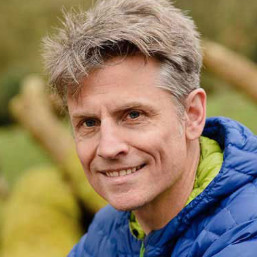The biosciences company that is working on projects to restore both woolly mammoths and dodos now has another species in its sights – or a suite of species in the shape of New Zealand’s extinct flightless and wingless moas.
Nine species of moa roamed New Zealand until the 1400s, ranging in size from the turkey-like bush moa to the two largest ones, which reached 3.6 metres high and weighed up to 230kg.
That is considerably larger than today’s largest living bird, the ostrich, which attains a maximum height of 2.75 metres.
- Scientists sink cow 1,629m into South China Sea, then gigantic animal appears out of the gloom
- Drone captures Greenland ice tearing open to reveal humungous animal beneath

The moas went extinct after the arrival of Polynesian people in the 1300s as a result of hunting and habitat loss. Now Colossal – which has already created animals resembling dire wolves as a result of modifying the DNA of grey wolves – wants to work with indigenous groups, scientists and other experts to resurrect all nine species and eventually reintroduce them into the wild.
- Discover the 10 biggest, heaviest birds in the world: Towering giants that don't always get airborne
- Why was New Zealand once free of land mammals?
Colossal will be collaborating with Ngāi Tahu Research Centre, a multi-disciplinary hub based at the University of Canterbury on South Island. Work has already begun on sequencing the genomes for all the moa species from bones held in the centre’s collection, and it’s hoped the first ones will be completed by summer 2026.
- 10 long-lost animals de-extinction scientists are attempting to bring back from the grave
- Back from the dead: meet some animals once presumed extinct
The technique to recreate moas will be the same as adopted for other species. For example, in the case of the dodo, the plan is to modify the genome of its closest living relative, the Nicobar pigeon, to make it more closely resemble that of its extinct cousin.
The closest-living relatives of moas are the tinamous of Central and South America, largely ground-dwelling (though not wingless nor flightless) and shy birds often found in tropical forests, but also in open areas as well. The Australian emu is also quite closely related.

Many conservation scientists are sceptical of Colossal’s efforts to bring back these lost species. They argue it can detract from more urgent wildlife protection efforts and that all the company is actually doing is creating animals that resemble the extinct ones, but we cannot know if they will behave like them. True 'de-extinction’ is impossible, they say.
Professor Mike Stevens, director of the Ngāi Tahu Research Centre, says it has partnered with the New Zealand Government to protect endemic birds for many decades.
“We are particularly excited by this project because of the extent to which it enables us to exercise our rangatiratanga (leadership) and tikanga (customs) and the potential to bring ecological and economic aspirations into a singular frame,” he says. “We also see huge importance in this technology as we enter the Anthropocene.”
Top image: South Island giant moa. Credit: Colossal Biosciences
More wildlife stories from around the world
- There really is a herd of water buffalo living in Hong Kong
- Strange bird from New Zealand set for rare breeding event as 'blood' tree fruits
- These ‘miniature Komodo dragons’ faced extinction on a remote Caribbean island – until a difficult ‘regreening’ project started
- "Largest great hammerhead ever filmed in the Bahamas"





